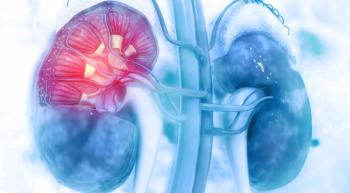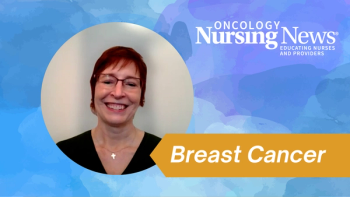
The Power of Knowledge: Implementing “Pre-” and “Post-Teach” Sessions into a Cancer Treatment Plan

Two oncology nurses with Allegheny Health Network discuss how they guide patients through their diagnosis, treatment, and life after cancer.
Often, when a patient arrives at the clinic to begin cancer therapy, they may be too anxious to fully comprehend what their nurses is explaining to them about their treatment, according to Heather Kennihan, MSN, RN, OCN, a professional development specialist with the AHN Cancer Institute.
Yet, same-day treatment education is common practice at many institutions, she said.
“Our practice [used to teach] the patients about their treatment the day they started,” said Kennihan. “They would sit in the chair, start getting their port access, and [the nurse would] tell them about their treatments, their side effects, and explain why they were getting this treatment.”
However, Kennihan was reading literature that showed that patients had anxiety levels during that time. Furthermore, she noticed their anxiety firsthand. “I was a nurse navigator for about 8 years: I saw a lot of the anxiety that they had prior to treatment,” she said.
In 2017, Kennihan helped roll out a “pre-teach” program. Through this initiative, she would connect with patients either by phone or through a separate appointment to discuss their treatment before they came into the clinic.
Around the same time, Kennihan’s colleague was working on addressing another gap in patient education: in survivorship care. In 2019, Nicole Kulasa, RN, OCN, joined the AHN nurse navigation team to help them reach accreditation standards for the Commission on Cancer (CoC) and Quality Oncology Practice Initiative (QOPI) survivorship care plan criteria. The institution sought to expand services beyond just delivering a survivorship care plan which also coincided with CoC changes for survivorship program resources.
“There is a lot of fear with a cancer diagnosis and treatment. But the more knowledge and education they have in the role they play in their care and involvement, empowers the patient and helps allievate some of the fear. That is the same in posttreatment, which can also be scary,” said Kulasa.
To help patients alleviate this fear, the survivorship team scheduled patients for a 60-minute post treatment appointment to discuss their survivorship care plan and potential long-term side effects.
“We say: ‘This is what's your follow-up should be.’ Then, ‘These are the tips that you should [take] to look forward to a healthy future and decrease the chances of cancer recurrence,’” she shared.
Both Kennihan and Kulasa recently met with Oncology Nursing News® to discuss these “pre-” and “post-teach” initiatives. Throughout the discussion, the 2 oncology nurses explain how the programs came about, navigating COVID-19 and key patient treatment education takeaways.
Implementing the Programs
“I actually started doing a “mock pre-teach’ before we really were [standardizing] it,” Kennihan said. “A lot of times, I would spend time with the patient over the phone for about a half hour to an hour describing to them what to expect [with their treatment], and what their side effects may be. It seemed to provide them that opportunity to ask questions.”
Kennihan’s team put a formal process together in 2018. This process included not only a nursing in the “pre-teach” proves, but also a clinical pharmacy specialist and an advanced practice provider. They wanted to include all 3 disciplines in this pre-teach appointment. Patients were asked to come in for a separate appointment prior to treatment to meet with all 3 specialists at once.
The institution also issued patient surveys and found that most of their patients responded well to 1-on-1 education and reading. This knowledge helped guide their pre-teach plan, as well.
“At first, we initiated in just a couple of [our] offices,” Kennihan said. “Kind of like a pilot. We [eventually] rolled it out to all 17 locations. It took all of 2019 to really get everyone involved, and really get everyone on board to participate: there is a lot of staff to educate, and a lot of processes to streamline.”
By 2020, the institution was turning its attention to survivorship. Together with an advanced practice provider, Kulasa helped develop a survivorship clinic, serving as nurse navigator.
“AHNCI had successfully implemented a process of a ‘pre-teach’ education session prior to patients starting treatment, in the survivorship clinic we addressed ‘post-teach:’ a treatment education session as a survivorship visit,” Kulasa said.
The post-teach session was a 60-minute appointment, in which the care team addressed how cancer had affected a patient and the resources needed to help navigate those physical and emotional side effects. The team would discuss health and wellness, nutrition, exercise, other preventative cancer screenings, and more, with the objective of providing patients with the tools to help them find their new normal.
Adjusting to COVID-19
Both teams dedicated many hours problem-solving when COVID-19 broke out in 2020. There was a lot of uncertainty.
Ultimately, the pre-teach team decided to move to telehealth and telephone offerings. However, they felt that was a lot less effective for patients, so the nursing team found ways to supplement the telehealth experienced.
“Our nursing staff and our clinical pharmacy team would call the patients on the phone after the meeting,” said Kennihan, adding that they would also send them written materials and resources as well.
As soon as they were able, the team reinstated in-person pre-teach sessions again. Although they had to limit the number of visitors, they allowed 1 caregiver to accompany their patient—even though caregivers weren’t allowed to come in for treatment itself.
“We felt that it was really imperative to have that caregiver with them, because we found that, oftentimes they are the ones asking more questions than the patients themselves.”
Unfortunately, the post-teach survivorship visits were starting in 2020, right when COVID-19 arrived.
“Starting a new program that hasn't been established before is obviously very challenging.,” Kulasa explained. “[Factoring in] the pandemic [was challenging] because we are asking patients to come into the center. The patients did not want to come into the centers for additional appointments.”
Similar to the pre-teach team, the survivorship team offered visits through telehealth or over the phone. They would also mail resources out to patients or send them electronically through “my chart.” However, they also felt that the lack of in-person visits was unfortunate.
To circumvent these issues, the clinic became more “nurse navigator and survivorship champion” driven.
On top of [these challenges], we had staffing changes as well. Now, we're [shifting] the survivorship clinic to [become] more survivorship champion driven:
Kulasa explained: “A patient who is finishing treatment is referred to the nurse navigator, who then calls and speaks with the patient, goes over the care plans, and then [connects] them up to [available] resources, such as support groups and virtual classes.”
In this way, the survivorship clinic was able to get off the ground, despite the challenge of COVID-19.
Big Takeaways
According to Kennihan, the most important thing to teach patients starting treatment is when to call the office, and which symptoms need to be immediately reported.
“If the patient does not take anything else away from that appointment, that is the information we want them to have: we want them to know that we are available 24 hours a day, 7 days a week, if they have any of these side effects or symptoms to report, that's the biggest thing,” she concluded. “We also want them to understand why they are getting their treatment, and we want them to understand the precautions that they need to take with getting those types of treatments. “
For survivors, it is important to have a candid conversation about what is next.
“The 2 common questions that patients ask me is: ‘I have completed treatment, what's next?’ and ‘How do I adjust to my new normal?’” Kulasa said.
Regardless of cancer stage or age, cancer has a tremendous impact on someone's life, she added. It causes physical and emotional changes, it affects relationships, work life, finances, and more.
Taking that time to address those changes and figure out what the future holds is crucial for quality care, she concluded.
Newsletter
Knowledge is power. Don’t miss the most recent breakthroughs in cancer care.





























































































